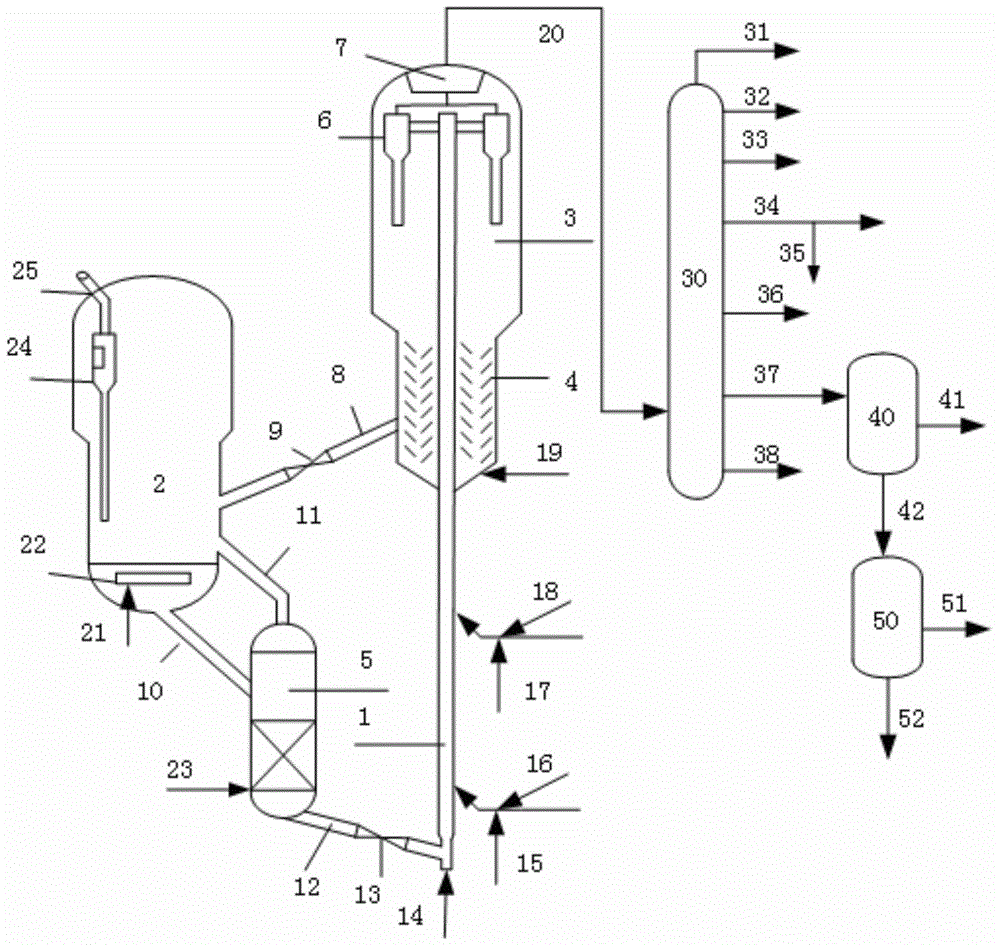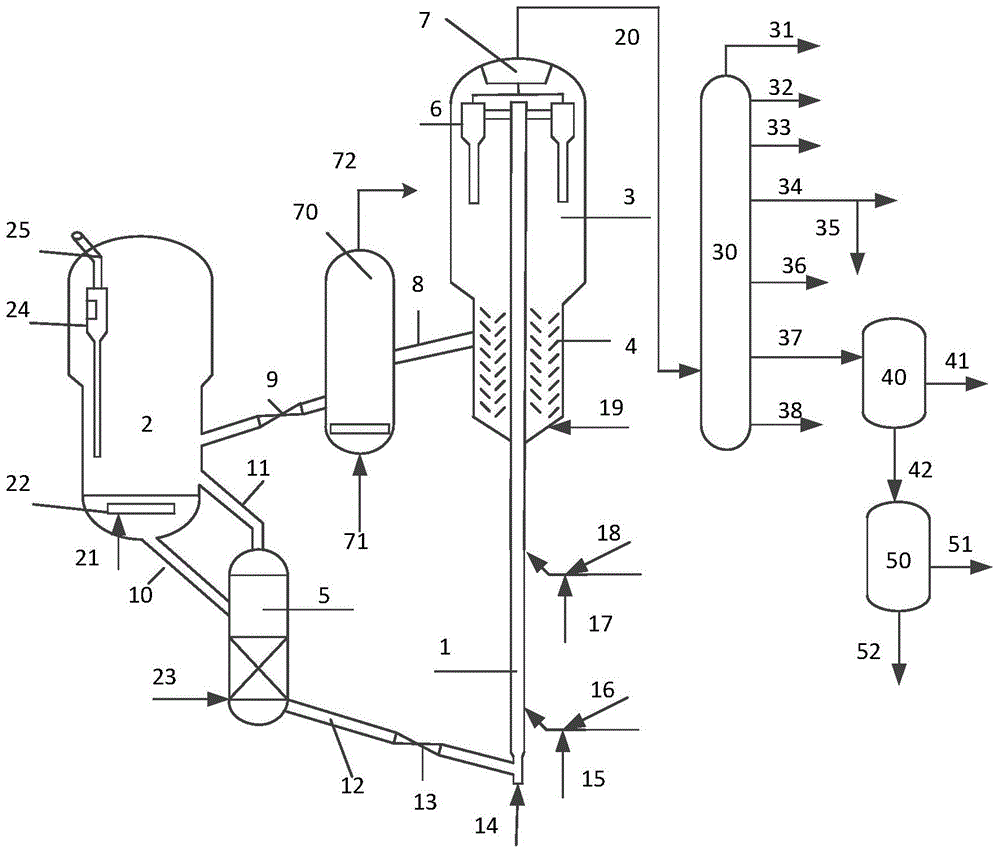Catalytic conversion method for producing propylene and fuel oil
A catalytic conversion method and fuel oil technology, which are applied in the field of catalytic conversion for the production of propylene and fuel oil, can solve the problems of insufficient reaction heat, low gasoline yield, and increased dry gas yield, so as to improve operational stability and overcome dryness. The effect of high gas production rate and reduced possibility
- Summary
- Abstract
- Description
- Claims
- Application Information
AI Technical Summary
Problems solved by technology
Method used
Image
Examples
Embodiment 1
[0104] according to figure 2 The test is carried out according to the process, straight-run diesel oil is directly used as the raw material for catalytic cracking, and the test is carried out on a medium-sized device in the riser reactor. Yanshan straight-run diesel oil is mixed with part of methane (the mass ratio of methane to raw oil straight-run diesel oil is 5:100) After that, it enters the bottom of the riser reactor. The cracking reaction is carried out under the conditions that the reaction temperature is 620°C, the reaction time is 2.5 seconds, the weight ratio of catalytic cracking catalyst to raw oil is 30, and the weight ratio of water vapor to raw oil is 0.25; the reaction product oil gas and the catalyst to be born Separation in the settler, the spent catalyst enters the stripping section under the action of gravity, and the hydrocarbon products adsorbed on the spent catalyst are stripped by water vapor, and the spent catalyst after stripping is exchanged with t...
Embodiment 2
[0106] This example follows figure 2 The process of Yanshan straight-run diesel oil is directly used as the raw material of catalytic cracking, and the test is carried out on a medium-sized device with a riser reactor. ) after mixing, the cracking reaction is carried out under the conditions that the reaction temperature is 640°C, the reaction time is 2.0 seconds, the weight ratio of catalytic cracking catalyst to raw oil is 25, and the weight ratio of water vapor to raw oil is 0.25. The raw catalyst is separated in the settler, and the raw catalyst enters the stripping section under the action of gravity, and the hydrocarbon products adsorbed on the raw catalyst are stripped by water vapor, and the raw catalyst after stripping is mixed with the high-temperature flue gas from the regenerator After the heat exchange (the temperature of the ungenerated catalyst after the heat exchange is 600°C), it enters the regenerator and contacts with air for regeneration. The regenerated ...
Embodiment 3
[0108] This example follows figure 2 The process of Yanshan straight-run diesel oil is directly used as the raw material for catalytic cracking, and the test is carried out on a medium-sized device with a riser reactor. Methane is mixed with feedstock oil (the mass ratio of methane to feedstock straight-run diesel oil is 10:100) Then enter the bottom of the reaction zone. The cracking reaction is carried out under the conditions that the reaction temperature is 640°C, the reaction time is 2.5 seconds, the weight ratio of catalytic cracking catalyst to raw oil is 25, and the weight ratio of water vapor to raw oil is 0.25. The reaction product is oil gas and unborn catalyst. Separation in the settler, the spent catalyst enters the stripping section under the action of gravity, and the hydrocarbon products adsorbed on the spent catalyst are stripped by water vapor, and the spent catalyst after stripping is exchanged with the high-temperature flue gas from the regenerator (The t...
PUM
| Property | Measurement | Unit |
|---|---|---|
| pore size | aaaaa | aaaaa |
| pore size | aaaaa | aaaaa |
Abstract
Description
Claims
Application Information
 Login to View More
Login to View More - R&D
- Intellectual Property
- Life Sciences
- Materials
- Tech Scout
- Unparalleled Data Quality
- Higher Quality Content
- 60% Fewer Hallucinations
Browse by: Latest US Patents, China's latest patents, Technical Efficacy Thesaurus, Application Domain, Technology Topic, Popular Technical Reports.
© 2025 PatSnap. All rights reserved.Legal|Privacy policy|Modern Slavery Act Transparency Statement|Sitemap|About US| Contact US: help@patsnap.com


